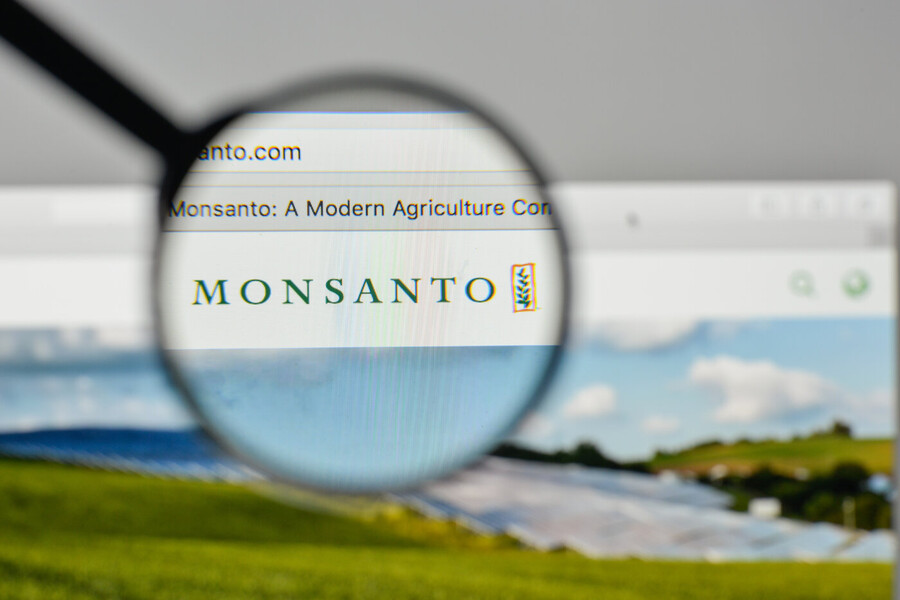In the documentary film Merchants of Doubt, Marc Morano, a former staffer for Senator James Inhofe (R-OK), described working to thwart action on climate by attacking the scientists speaking out about the crisis. “You’ve got to name names and you’ve got to go after individuals,” Moreno said. He describes how they “went after” climate scientists James Hansen and Michael Oppenheimer – “and we had a lot of fun with it,” he adds.
Attacking scientific experts is an age-old industry spin tactic – and one the pesticide industry helped invent. Sixty years ago, when Rachel Carson published Silent Spring, her scientific analysis of the harms of DDT, Monsanto engaged in personal attacks to undermine her research. The company’s public relations agents derided Carson as a “spinster,” a “priestess of nature,” and a “mass murderess” responsible for the lost lives of African children.
Corporations and their PR proxies have deployed character assassination against countless scientists since that time. These attacks serve two purposes: They work to undermine the credibility of people who share evidence of harm caused by toxic products, and they can have a chilling effect, causing critics to think twice about putting themselves in industry crosshairs.
Orchestrating “outrage” against cancer researchers
Food and chemical companies have long set their sights on one particular target in the science world: the International Agency for Research on Cancer (IARC). The specialized cancer agency of the World Health Organization has worked for 50 years to identify cancer hazards in order to inform policies that can prevent cancer.
“I’ve been fighting IARC forever!!! :)” one former Kraft Foods scientist wrote to a former Syngenta scientist in a 2016 email we obtained through public records requests. “Foods and ag are under siege since Glyphosate in March 2015,” he wrote. “We all need to gather somehow and expose IARC … Next priorities are all food ingredients: aspartame, sucralose, dietary iron, B-carotene, BPA, etc. IARC is killing us!"
The glyphosate report provided a key rallying point for foes of IARC. Many studies link glyphosate to cancer and other health problems including infertility, kidney and liver problems, disruption of the microbiome, and more. In March 2015, based on limited evidence of carcinogenicity in humans for non-Hodgkin lymphoma, and “convincing evidence” that glyphosate also can cause cancer in laboratory animals, IARC classified glyphosate as a probable human carcinogen.
In response, Monsanto rolled out an “an unprecedented and harsh strategy” to discredit experts, wrote Jonathan Samet, dean of the Colorado School of Public Health, in the American Journal of Public Health. Monsanto’s attacks on IARC, he said, amounted to an “attack on expert review” itself.
Journalists at France’s largest newspaper, Le Monde, in their award-winning series about the Monsanto Papers, described the Monsanto-led effort to discredit IARC as “an effort to destroy the United Nations’ cancer agency by any means possible.”
Lessons from industry’s attack on IARC
In the wake of the IARC ruling, over 100,000 farmers, groundskeepers, or their families sued Monsanto with claims that exposure to glyphosate-based Roundup herbicides caused them to develop non-Hodgkin lymphoma. For our report Merchants of Poison: How Monsanto Sold the World on a Toxic Herbicide, we analyzed documents released in the trials to better understand the tactics pesticide companies and their allies used to attack IARC. Here are some key takeaways.
Monsanto relied on ‘partners’ across the food and ag industries: Monsanto’s confidential public relations plan assigned 20 corporate staffers to prepare for the IARC glyphosate report and reach out to allies for help. Their objectives included “neutralize (the) impact” of the report, “ensure MON POV” (Monsanto’s point of view), and work with industry partners to “orchestrate outcry” and "outrage" against IARC.
The Monsanto plan named four tiers of “industry partners” to tap to share the company’s messaging. These included 1) the largest pesticide and food industry lobby groups; 2) “science” groups that advanced industry messaging; 3) food-industry funded “consumer trust” groups; and 4) growers’ groups representing industrial farming.
These groups post frequent content, cite one another as sources, and often dominate Google News searches on topics important to pesticide companies. The reach and influence of these industry allies — and the powerful false impression of independence they create — cannot be overstated.
Pesticide industry defense is a big business: Our analysis found that just seven front groups named in Monsanto’s glyphosate-defense documents spent $76 million in a five-year period – that’s about $15 million a year disseminating corporate disinformation, including attacks on scientists. Six industry trade groups named in Monsanto’s documents spent more than $1.3 billion over the same five years, including for PR and lobbying to influence regulation over glyphosate.
While glyphosate defense is only part of the budgets of these organizations — in some cases a small part — the size of their budgets, taken together, convey what a huge industry this sector and these trade associations are.
Front groups led personal attacks on scientists: The most blatant attacks on scientists came from front groups like the Genetic Literacy Project. Front groups claim to be independent, but documents show they worked closely with corporations on product-defense efforts. Genetic Literacy Project claimed for years to accept no corporate funding, but the group now discloses funding by Bayer.
For the IARC project, documents show that a Monsanto executive reached out to Jon Entine, executive director of Genetic Literacy Project, and asked him to write about the glyphosate ruling. Genetic Literacy Project has since posted dozens of articles critical of the cancer research agency – many of them personal attacks on the scientists involved in the glyphosate review. These posts accused the scientists of everything from “corruption, distortion and fraud,” to conspiracy, lying, and secrecy. Although the IARC working group scientists are volunteers, the Genetic Literacy Project accused them of being motivated by “personal profit and ideological vanity.”
Mainstream media played a key role: A key boost to Monsanto’s campaign came via a series of articles critical of IARC that appeared in the international wire service Reuters between 2016 and 2018. Thanks to internal documents, the public can now see the backstory, and how Monsanto and its PR firm Red Flag worked to shape the articles by longtime Reuters correspondent Kate Kelland with exclusive materials and anonymous sources.
The most influential of these articles reverberated around the world with reprints appearing in many leading news outlets, and appeared in paid ads on Google and Facebook (with no disclosure about who paid for the ads). The article even won the 2017 “Science Story of the Year Award” from the Foreign Press Association.
Internal documents released in litigation eventually revealed that Kelland’s source for key documents cited in the article was Sam Murphey, a Monsanto media relations executive. The article hewed closely to the framing and talking points Murphey provided in an email, but he was not revealed to readers as the source.
Eventually, the truth does come out
Monsanto’s influence over the public debate on glyphosate has been pervasive. Yet the science linking the heavy use of glyphosate and non-Hodgkin lymphoma has been compelling enough to convince juries in the U.S. and Canada to award billions of dollars to people with cancer who are suing over glyphosate exposure.
Those lawsuits compelled hundreds of thousands of pages of Monsanto documents to make their way into public view – exposing the secrets we discuss here.
Bayer, which purchased Monsanto in 2018 in what has been described as one of the “worst corporate deals ever,” is now lobbying Congress to shield it from further liability in the Roundup cancer lawsuits. The U.S. government should not protect Bayer from its bad business choices. And the media, food industry, and consumer and farmers groups should stop shielding pesticide manufacturers from science — and the growing evidence that a healthy diet is one that minimizes toxic pesticides.
Stacy Malkan is co-founder and managing editor of U.S. Right to Know. Visit USRTK.org for more of our reporting on corporate wrongdoing and government failures that threaten our health. Read more about pesticide industry disinformation tactics in Merchants of Poison: How Monsanto Sold the World on a Toxic Herbicide.


